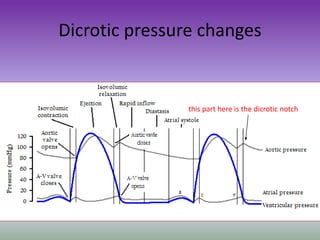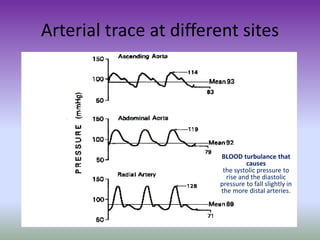art line waveform explanation
When removing the arterial line hold pressure on the site for approximately 10 minutes and apply a pressure dressing to the site. It is supposed to be an aortic pulse waveform produced by applanation tonometry of the radial artery.

Arterial Line Insertion And Waveforms Criticalcarenow
It is also used to obtain samples for arterial blood gas analysis ABGs and is convenient.

. Arterial waveform analysis has gained a large interest in. Document dressing changes in the graphic record and and DAR abnormal findings. It is most commonly used to monitor blood pressure directly and accurately as with close and accurate titration of blood pressure medications.
The systolic phase characterised by a rapid increase in pressure to a peak followed by a rapid decline. The waveform depicted here represents the arterial pressure wave of a hypertensive person with poorly compliant arteries borrowed from Mills et al 2008 who in turn adapted it from Smith et al 2000. Commonly seen in conjunction with electrical alternans which is a beat-to-beat variability of the QRS complex on the ECG.
Overdamping defined as when the oscillations following the downstroke are sluggish and can underestimate systolic pressure or overestimate diastolic pressure. Do not apply blood pressure cuffs to that arm and Do NOT infuse any IV fluids via the. Systolic and diastolic blood pressure ranges should fit within the scale of the waveform.
It will also address the advantage of measuring real-time CO by the arterial waveform and the benefits to measuring SV variation. With an arterial waveform note the scale range. Change dressing and chart date and time.
Waveform should rise sharply plateau and drop off sharply when released Figure 1. Inaccurate damping can lead to inappropriate treatment. Always ensure that the patient does not have any numbness or tingling in the area.
RNs may remove arterial lines in CCTC with an order from a physician. Also known as an art-line or a-line an arterial line is a thin catheter that is inserted into an artery. This phase begins with the opening of the aortic valve and corresponds to the left ventricular ejection.
Pulsus alternans can be found in severe ventricular dysfunction or a type of cardiac distress. The troughs average the diastolic pressure. This article focuses on the principles of arterial waveform analysis and their determinants components of the arterial system and arterial pulse contour.
Pulsus alternans is a beat-to-beat variability of the arterial line waveform formed by alternating strong and weak beats. The arterial pulse waveform. If the scale is less than 60 mm Hg then the waveform is probably not arterial but more likely a waveform from a pulmonary artery catheter.
The arterial pulse waveform can be separated into three distinct components. Document removal in the intravascular device section of the. Print a waveform at the start of each shift to record line placement confrmation and waveform quality.
Normal Arterial Line Waveforms Deranged Physiology

Arterial Line Techniques Tips Challenges And Interpretation Dr A S Arunkumar Youtube
Normal Arterial Line Waveforms Deranged Physiology

A Line Arterial Line Set Up Zeroing Leveling Waveform 네이버 블로그
Interpretation Of Abnormal Arterial Line Waveforms Deranged Physiology

Under And Overdamping Of The Arterial Blood Pressure Waveform And Download Scientific Diagram

Arterial Cvp Line Waveforms Intensive Nurse

Essential Critical Care Skills 3 Arterial Line Care Nursing Times
Arterial Lines Intensive Care In A Flash

Arterial Cvp Line Waveforms Intensive Nurse

Hemodynamic Monitoring Thoracic Key
Normal Arterial Line Waveforms Deranged Physiology

Pressure Transducers And Arterial Line Waveforms Rk Md
Normal Arterial Line Waveforms Deranged Physiology

Arterial Line Insertion And Waveforms Criticalcarenow

